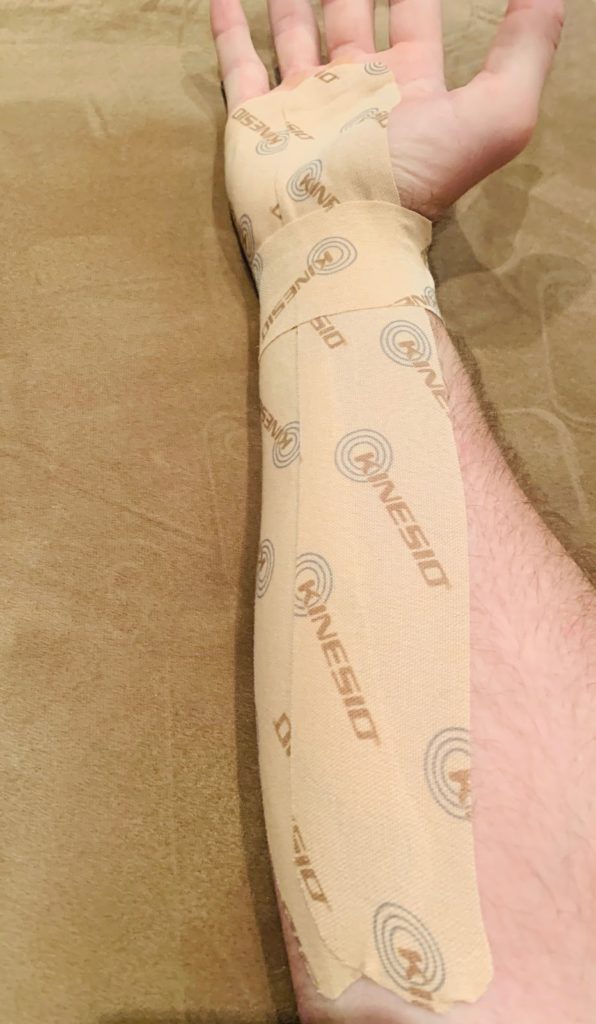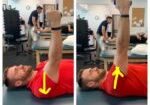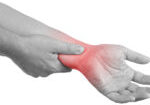Conservative Management of Carpal Tunnel Symptoms: A Comparison of the effectiveness of orthosis wear, kinesiotaping and paraffin treatment.
Filed under Uncategorized
Kaplan, B. M., Akyuz, G., Kokar, S., & Yagci, I. (2018). Comparison of the effectiveness of orthotic intervention, kinesiotaping, and paraffin treatments in patients with carpal tunnel syndrome: A single-blind and randomized controlled study. Journal of Hand Therapy, 32, 297-304.
The Skinny
The authors completed a randomized control trial with three groups to test the effectiveness of kinesiotape and paraffin for carpal tunnel syndrome (paraffin hand therapy). There were three groups in this study:
CON group (n = 36) – Control group with a fabricated nighttime orthosis which holds the wrist in a neutral position.
KIN group (n = 37) – This group was fabricated a nighttime orthosis which holds the wrist in neutral position AND kinesiotape was applied 2 times per week for a 3-week period.
PARA group (n = 37) – This group was fabricated a nighttime orthosis which holds with wrist in a neutral position AND paraffin treatment 3 times a week for a 3-week period.
In the Weeds
110 patients were selected for this study based on the inclusion criteria which included symptoms for less than a year, no previous carpal tunnel injections or surgery, no therapy that specifically targeted CTS in the past 6 months, no co-morbidities such as diabetes and no trauma to the wrist or its surrounding structures. When comparing hand strength, the KIN group showed a greater improvement than the CON and PARA groups at the 3 month mark. The KIN group also showed a significant decrease in pain through the use of the VAS scale from pre-treatment to the 3 month mark with a decrease from 7.1/10 to 2.1/10. Kinesiotape application: Tape was applied distal to proximal from distal palmar crease at 3rd, 4th, and 5th metacarpals to 5 cm short of medial epicondyle with paper off tension. Tape was applied across the wrist with 20% tension across the carpal tunnel with 0% tension on the ends of the tape.

Bringing it Home
The results found that the use of kinesiotape and a nighttime orthotic proved most effective in reducing pain scores in patients with CTS. This gives therapists an evidence based treatment option for conservative management of CTS with the use of the kinesiotaping and splinting. The daytime kinesiotaping allows for functional use of the involved hand without having to wear an orthosis during the day. It is worth noting that kinesiotape tends to stick differently to different clients and usually needs to be reapplied every 3-5 days. That makes this a short-term solution and an adjunct to the treatment rather than the primary method of management.
The treatment provided was very detailed, giving therapists the tools to re-create these methods in a clinical setting. When reporting their results, authors state an improvement in grip strength, but do not include these numbers in their article.. This may be an important statistical number to this particular population as many individuals who have CTS deal with a lack of grip strength. Overall this is a very well written article giving therapists another tool for their toolbox when treating individuals with CTS.
3 Comments
Leave a Comment
More To Read
Increasing Shoulder Range of Motion by improving Scapulohumeral Rhythm
Scapulohumeral rhythm is often the key component when treating shoulder conditions and the reason for the lack of total shoulder range of motion. This may also be a critical component in order to prevent shoulder conditions during rehabilitation of other upper extremity conditions such as distal radius fractures, tendon injuries, and elbow injuries. Scapulohumeral rhythm…
Read MoreSensitivity and Specificity in Thoracic Outlet Syndrome (TOS) Tests in Hand Therapy
By: Mikayla Murphy Sensitivity and Specificity in Thoracic Outlet Syndrome (TOS) Tests in Hand Therapy Thoracic outlet syndrome (TOS) describes the compression of nerves, arteries, and veins as they pass through the thoracic outlet. Compression can occur at the interscalene triangle, the costoclavicular triangle, and the subcoracoid space (Physiopedia, n.d.). There are three types of…
Read MoreManagement of a TFCC Injury in Hand Therapy
By: Taylor Volentine The wrist is composed of very complex joints that assists with movement in individuals of all ages and abilities. For instance, an active individual who participates in sports such as tennis, football, or gymnastics may increase the probability for wrist complications and injury (Morrison, 2019). Individuals with repetitive trauma from work or…
Read MoreDoes mirror therapy work for hand therapy patients with general orthopedic conditions?
By: Maddie Mott Rostami, R. H., Arefi, A., & Tabatabaei, S. (2013). Effect of mirror therapy on hand function in patients with hand orthopaedic injuries: a randomized controlled trial. Disability and Rehabilitation, 35(19). 1647-1651. DOI: 10.3109/09638288.2012.751132 The Skinny: How does mirror therapy work? Mirror therapy (MT) is performed by placing the patient’s injured extremity into…
Read MoreSign-up to Get Updates Straight to Your Inbox!
Sign up with us and we will send you regular blog posts on everything hand therapy, notices every time we upload new videos and tutorials, along with handout, protocols, and other useful information.







Thank you!
Great Rapid Review!….This is going into practice right away in my clinic!
Awesome! It’s always great to see research go directly into practice.